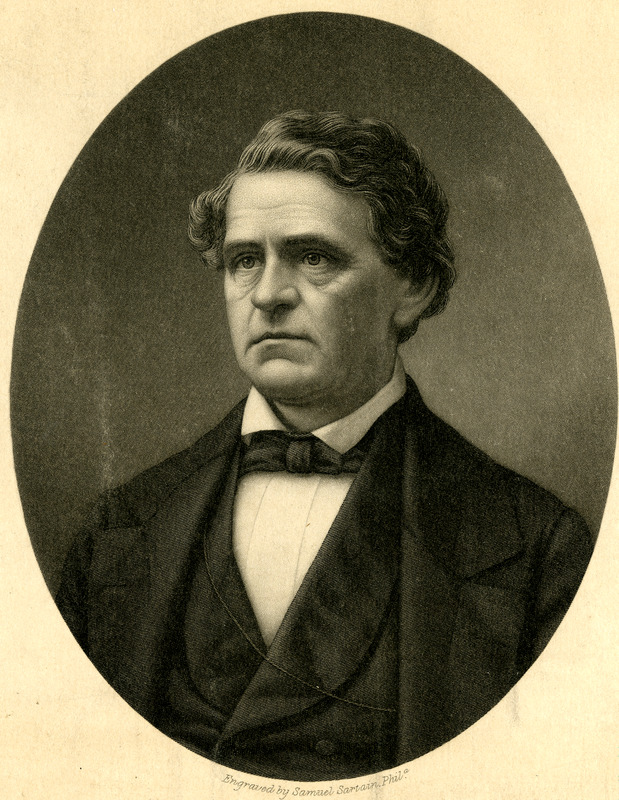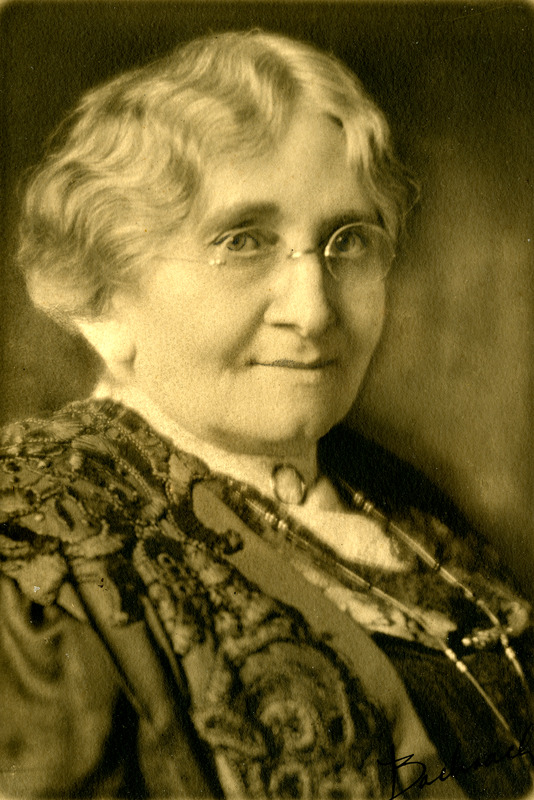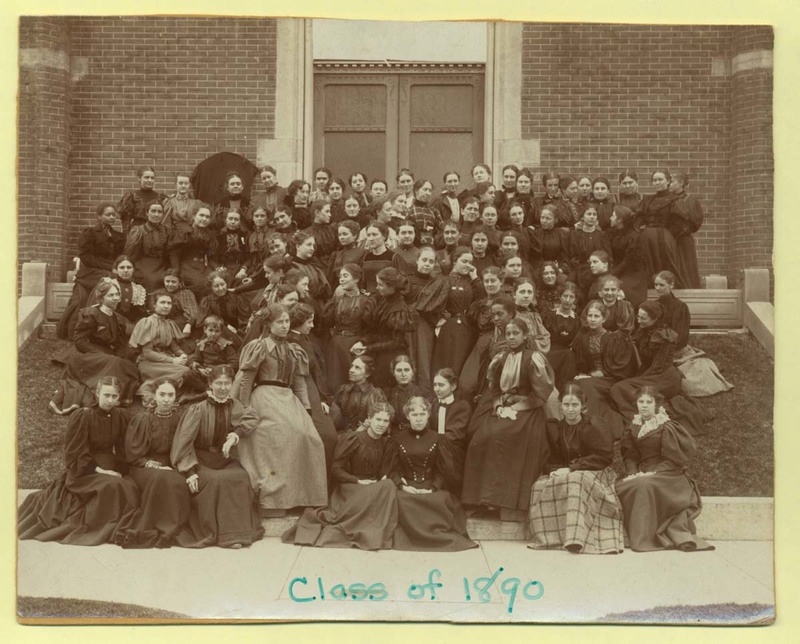Founders
Ovid Butler (1801-1881) was a schoolteacher, lawyer, journalist, land developer, abolitionist, and one of the founders of Butler University. Born in New York, Ovid moved to Indiana with his parents and siblings around the age of seventeen. In 1825 he moved to Shelbyville, where he met his first wife Cordelia Cole (1809-1838), whom he married in 1827. Nine years later Ovid moved his family to Indianapolis, where he established a law practice; his father Chauncy also moved with them to become the preacher at Central Christian Church, a Disciples of Christ congregation. Ovid married his second wife, Elizabeth Anne Elgin (1818-1882), in 1840. Ovid experienced ill health in 1847, and by 1849, he had retired from his law practice.
Around the time of his illness, Ovid became more politically active. As a staunch abolitionist, he helped organize the Free Soil Party (1848-1852), which consisted of anti-slavery Democrats and Whigs. In the same year, he began publishing The Free Soil Banner and promoted the party’s initiatives and advocated for the abolition of slavery. He later helped establish The Indiana Free Soil Democrat newspaper, which eventually merged with The Indianapolis Journal. As the 1850s continued, the national Free Soil Party declined, and in 1854 Ovid and other Hoosier party members and abolitionists helped found the original Republican Party.
In 1847 Ovid involved himself with the initiative to found a Disciples of Christ university in Indiana. He served on the initial five-person committee to consider proposed sites for the institution, and after a few years of delay, he was chosen at the 1849 Disciples of Christ state meeting to lead the seven-person committee to draft the legal charter. Having purchased approximately twenty-five acres of farmland north of Indianapolis’s Mile Square in 1846, he provided around twenty acres near his house (known as “Forest Home”) to be used as the first campus. He was involved in initial fundraising and promotion for the institution, sought donations to help its growth, and led the Board of Directors until 1871. Six years later, the Board—against Ovid’s wishes— renamed the institution in his honor
Beyond the many people who served on Disciples of Christ committees and the University’s Board of Directors— including the University’s later namesake Ovid Butler— numerous individuals contributed to the founding and growth of Butler. Some individuals gave of their time, energy, and funds without the same remembrance as specifically named individuals. Others founded programs, departments, or initiatives without being emphasized. For example, several of the University’s current colleges came from mergers with other institutions that existed separately—such as the College of Education founded by Eliza Blaker.
Eliza Blaker (1854-1926) was an educator and advocate for early childhood education. Born and raised in Philadelphia, she grew up in a Quaker household with abolitionist beliefs. She attended a normal school—an institution focused on the training of teachers—to start her teaching career. In the late 1870s she attended a training school focused on kindergarten or preschool education—a European concept brought to the United States in the early 1860s. She married her childhood friend Louis Blaker in 1880.
In 1882 Blaker was invited to come to Indianapolis to teach at a private academy for children of upper-class families. She left the private academy shortly after arriving to work for the Indianapolis Free Kindergarten and Children’s Aid Society. Through the organization’s work to establish free kindergarten schools across the city, she helped underprivileged children, including establishing kindergartens for immigrant children and extending education to those students’ parents.
Blaker trained kindergarten teachers in her home shortly after her arrival to Indianapolis. The growing need moved her to found the Indianapolis Kindergarten and Primary Normal Training School, which became known as “Mrs. Blaker’s College.” Blaker’s teaching was inclusive, demanding not only that all students—of every race, gender, and class— be allowed in her kindergarten classrooms by placing white student teachers in classrooms of Black students and Black student teachers in white schools. In 1905 the school became the Teachers College of Indianapolis, and over the course of its history only hired female faculty. A building for the school was later built at the corner of Alabama and 23rd streets.
The reputation of the Teachers College of Indianapolis (TCI) grew through the testimonies of Blaker’s students. Graduates founded kindergartens across the United States, on Native American reservations, and across the world, including in Puerto Rico, India, and China. Many educators benefited from TCI, including Sigma Gamma Rho founder Dorothy Hanley (Whiteside) who attended the school from 1928 to 1929.
Shortly before her death, Blaker reached an agreement with Butler University to allow TCI students to take courses at both schools. In 1930 TCI officially merged with the University, combining with the University’s Department of Education to become the College of Education.


